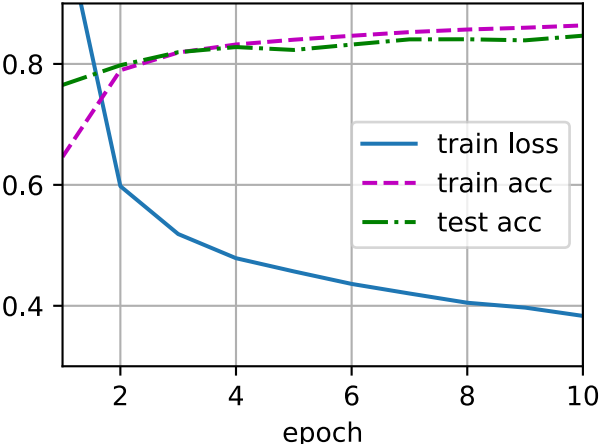Python深度学习pytorch神经网络多层感知机简洁实现
我们可以通过高级API更简洁地实现多层感知机。
import torch from torch import nn from d2l import torch as d2l
模型
与softmax回归的简洁实现相比,唯一的区别是我们添加了2个全连接层。第一层是隐藏层,它包含256个隐藏单元,并使用了ReLU激活函数。第二层是输出层。
net = nn.Sequential(nn.Flatten(), nn.Linear(784, 256), nn.ReLU(), nn.Linear(256, 10)) def init_weights(m): if type(m) == nn.Linear: nn.init.normal_(m.weight, std=0.01) net.apply(init_weights)
训练过程的实现与我们实现softmax回归时完全相同,这种模块化设计使我们能够将与和模型架构有关的内容独立出来。
batch_size, lr, num_epochs = 256, 0.1, 10 # 批量大小为256,学习率为0.1,类型为10 loss = nn.CrossEntropyLoss() # 使用交叉熵损失函数 trainer = torch.optim.SGD(net.parameters(), lr=lr) # 开始训练
train_iter, test_iter = d2l.load_data_fashion_mnist(batch_size) d2l.train_ch3(net, train_iter, test_iter, loss, num_epochs, trainer)

以上就是Python深度学习pytorch神经网络多层感知机简洁实现的详细内容,更多关于pytorch神经网络的资料请关注hwidc其它相关文章!
【文章出处:防御服务器 】